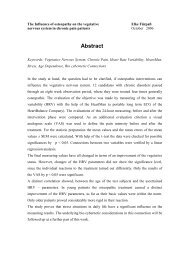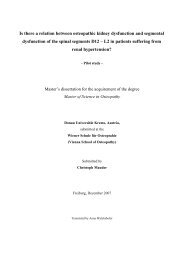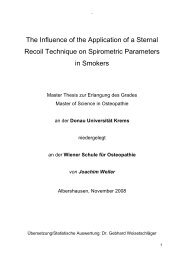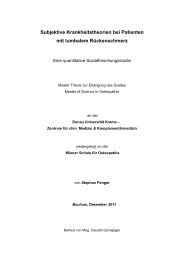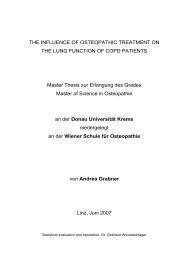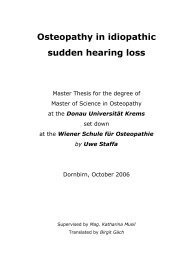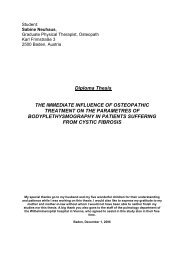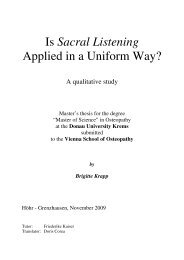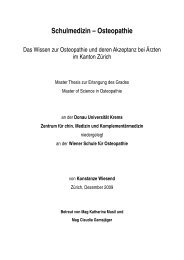Can back pain caused by symptom-giving sacroiliac joint relaxation ...
Can back pain caused by symptom-giving sacroiliac joint relaxation ...
Can back pain caused by symptom-giving sacroiliac joint relaxation ...
You also want an ePaper? Increase the reach of your titles
YUMPU automatically turns print PDFs into web optimized ePapers that Google loves.
contribute to this locking mechanism as they increase the pressure on the <strong>joint</strong> when<br />
contracted:<br />
o the transverse abdominal muscle<br />
o the middle part of the internal oblique abdominal muscle<br />
o the piriformis muscle<br />
o the coccygeal muscular structures and the pelvic floor<br />
1.2.3. The pelvic shear<br />
according to Klein and Sommerfeld [24]<br />
The pelvic shear is a model which represents the pelvis as a buffer system in a<br />
sagittal plane. This model presumes certain mobility in the SIJ.<br />
In the upright standing position, the two levers sacrum and innominate bone<br />
introduce a nutational motion in the SIJ. This nutation is slowed down <strong>by</strong> the<br />
sacrotuberous and the sacrospinal ligament. As they have a favourable leverage,<br />
they are the most effective dampers of the nutational motion, even though they act<br />
only passively. The following muscles are able to<br />
function as active nutation dampers:<br />
o iliac muscle<br />
o straight muscle of the femor, tensor<br />
fasciae latae muscle, sartorius muscle<br />
o piriformis muscle<br />
o muscles of the pelvic floor<br />
During pregnancy the relation between the<br />
different levers changes and the stabilising Fig. 1F: The pelvic shear [24]<br />
ligaments get softer. Therefore the model of the pelvic shear can slightly deviate from<br />
its normal scheme.<br />
Master’s Thesis Wolfgang Aspalter 19



